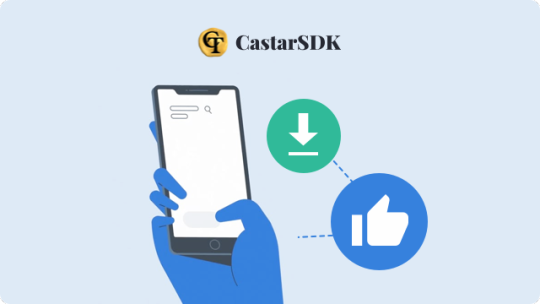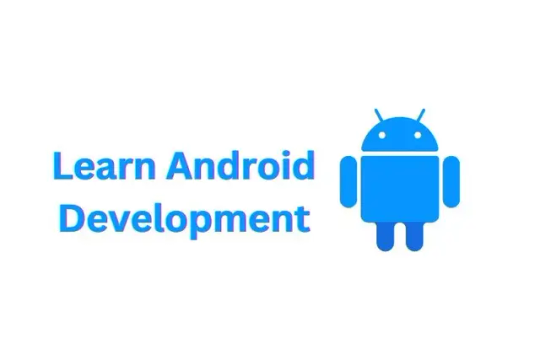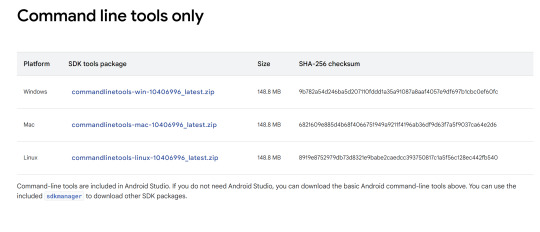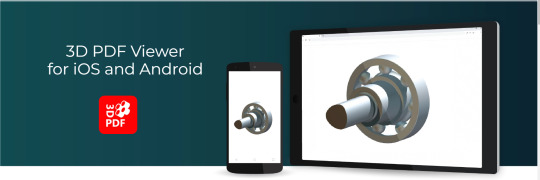#sdk android
Explore tagged Tumblr posts
Text
Take me, I’m yours, If you want, make new friends. https://s.net.vn/IJG9

#cat run away game#cat running#pet#android#racing games#android studio#Google Play#Android SDK#f1 play chair#extreme kong#vip pets#dog face#playeat evolution#Cat Runner game| Run#jump and collect gold couns#racing game#Hieu Gamer#gameplay#game#mobile games#ios games#cat game#talk to Tom#mobile lord#mmorpg mobile#top mobile games#steam cell#mobile role playing#mobile aoe#online mobile games
3 notes
·
View notes
Text
2025 ASO Optimization Trends: The Impact of AI, User Engagement, and Privacy Regulations

App Store Optimization (ASO) has always been a key strategy for improving app visibility and downloads. However, with the continuous evolution of AI algorithms, user engagement metrics, and privacy regulations, ASO rules are undergoing significant changes. In 2025, developers must adapt to these trends to stay ahead in the competitive market.
In this article, we will explore these three major factors and how tools like CastarSDK can help optimize ASO and app monetization.
1. AI-Driven ASO Optimization
Traditionally, ASO relied on manual keyword optimization and app page adjustments. Now, AI recommendation algorithms are dominating app store search and discovery mechanisms.
● Semantic Search Optimization – App store searches are no longer limited to exact keyword matches but are based on user intent. Developers must optimize long-tail keywords to align with AI algorithms.
● Smart A/B Testing – AI can automatically analyze different app icons, screenshots, and descriptions, recommending the best-performing versions to increase conversion rates (CVR).
● Personalized Recommendations – AI considers not only keywords but also user behavior data. Apps with high retention rates are more likely to be recommended.
✅ Optimization Strategy – Utilize AI-powered tools (e.g., ChatGPT, App Radar) for keyword research and conduct A/B testing to refine app pages.
2. The Importance of User Engagement Metrics
By 2025, ASO rankings will depend not only on download volume but also on user engagement metrics, such as:
● Retention Rate – The percentage of users who return to the app on Day 1 (D1) and Day 7 (D7) directly affects app store ranking.
● Session Duration – The longer users stay within an app per session, the better its ranking potential.
● Ad Bounce Rate – If users frequently exit an app due to excessive ads, its ranking may drop.
✅ Optimization Strategy – Minimize ad interruptions and improve user experience. For example, use CastarSDK instead of traditional ads to enable non-intrusive app monetization, boosting retention while generating revenue.
3. The Impact of Privacy Regulations and How to Adapt
Stricter regulations like GDPR and CCPA are reshaping the app ecosystem, influencing how ASO works:
● IDFA/GAID Restrictions – Apple and Google have limited access to advertising identifiers, making targeted ad campaigns more challenging.
● Increased Data Transparency Requirements – Apps must clearly disclose data collection practices, or they risk removal from app stores.
● Changes in Monetization Models – With limitations on personalized ads, developers must explore SDK monetization as an alternative.
✅ Optimization Strategy – Adopt privacy-friendly monetization methods such as CastarSDK, which does not collect user data but instead monetizes idle network bandwidth, ensuring full compliance with GDPR and CCPA.
Conclusion: How to Adapt to 2025’s ASO Trends?
✅ Leverage AI for ASO – Use AI tools for keyword research and A/B testing. ✅ Enhance User Engagement – Reduce ad interruptions and improve retention rates. ✅ Comply with Privacy Regulations – Implement ad-free app monetization solutions like CastarSDK.
In 2025’s highly competitive ASO landscape, adapting to AI-driven ranking algorithms, optimizing user experience, and adopting compliant monetization strategies will be crucial for success.
Explore CastarSDK today and unlock a new era of ad-free monetization!
#developers#monetization#mobile app development#ios app development#android#game development#sdk#app store
1 note
·
View note
Text
https://www.tutorials24x7.com/android/how-to-install-android-sdk-tools-on-windows
How to Set Up SDK Platform Tools on Windows for Seamless Development Get the latest SDK Platform Tools for Windows and streamline your Android development workflow. Learn how to install and configure essential tools like ADB and Fastboot with our step-by-step guide. Optimize debugging, testing, and app deployment with ease. Visit Tutorials24x7 for a comprehensive setup guide on Android SDK tools for Windows.
0 notes
Text
Beginner’s Guide to Mobile App Development |Artzen Technologies
Introduction
Mobile apps are now essential for companies and entrepreneurs trying to reach a wider audience in today's digital environment. Knowing the basics of mobile app development is the first step to success, regardless of whether you have a game-changing idea or want to create an app for your company. Our areas of expertise at Artzen Technologies include UI/UX design, mobile SDK integration, iOS and Android programming, and app monetization. From conception to release, this tutorial will help you navigate the process of developing your first mobile application.
Step 1: Define Your App Idea and Goals
Before you start building your app, you need to be clear about what it does and who it’s for. Ask yourself these questions:
What problem does my app solve? Think about a common problem people face and how your app can make life easier. For example, if people struggle to find healthy recipes, your app could provide quick and easy meal ideas.
Who is my target audience? Decide who will use your app. Are they students, busy professionals, parents, or businesses? Knowing your audience helps you design an app that fits their needs.
What features should my app have? List the key things your app should do. Should it have a search option, push notifications, payment integration, or social media sharing? Focus on features that will truly help users.
Do Market Research Check if similar apps already exist. Look at what they do well and what they lack. Reading reviews can help you understand user pain points and improve your idea.
Conduct market research to validate your idea and identify competitors. Understanding user pain points will help refine your concept and create a unique app.
Step 2: Choose the Right Platform – iOS or Android?
One of the most important decisions in mobile app development is selecting a platform:
iOS Development: With an emphasis on the Apple environment, iOS apps are created with Xcode and need to be developed in Swift or Objective-C. In general, iOS consumers are more inclined to pay for apps.
Android Development: Developed with Android Studio and utilizing Java or Kotlin. Android is perfect for reaching a wider audience because of its bigger global market share.
Step 3: Plan Your App’s UI/UX Design
User experience plays a critical role in an app’s success. A well-designed app with intuitive navigation keeps users engaged. Key UI/UX principles include:
Simplicity: Keep your design clean and clutter-free.
Consistency: Use familiar icons and recognized movement.
Accessibility: Ensure your app is usable by people with challenges.
At Artzen Technologies, our UI/UX design team focuses on creating seamless and visually appealing interfaces to enhance user engagement.
Step 4: Select the Right Tech Stack
The technology you choose for your app affects how fast, secure, and scalable it will be. Here’s a simple breakdown of the key parts:
Frontend (What users see and interact with)
Swift for iOS apps
Kotlin for Android apps
Flutter if you want one app that works on both iOS & Android
Backend (How the app processes data)
Node.js, Firebase, or Django to handle user logins, store data, and manage app functions.
Database (Where data is stored)
MySQL, Firebase, or MongoDB to store user information, app content, or transactions.
Mobile SDKs (Extra tools for better features)
Use special tools (SDKs) for push notifications, analytics, and payment systems to improve your app.
Choosing the right technology makes your app run smoothly and keeps users happy.
Step 5: Develop and Test Your Mobile App
Once your design and tech stack are finalized, it’s time to start coding. Follow these best practices:
Use Agile Methodology – Break the development process into small tasks (sprints) and complete them step by step. This helps keep progress smooth and efficient.
Use Mobile SDKs – Add extra tools to your app, like:
Analytics to track user behavior
Crash reporting to fix bugs
Social logins to let users sign in with Google, Facebook, etc.
Step 6: Monetization Strategies for Your Mobile App
Take into account these app monetization techniques if you want to make money off of your app:
1. Fermium Model: Provide a free version with in-app purchases for premium features. 2. In-App Ads: These are display advertisements from Facebook Audience Network or Google AdMob. 3. Subscription Model: Charge users for access on a monthly or annual basis. 4. Paid Apps: These require a one-time payment in order to be downloaded. 5. Affiliate Marketing: Promote third-party goods or services to earn commissions.
Step 7: Launch and Market Your App
Once your app is ready, it’s time for launch! Follow these steps:
Submit to App Stores: Make your program available on the Google Play Store for Android and the Apple App Store for iOS. Make sure you adhere to all rules.
App Store Optimization (ASO): Use relevant keywords, , excellent screenshots, and a captivating app description.
Marketing Plan: Use influencer relationships, paid advertising, and social media to promote your app.
Step 8: Gather Feedback and Improve
After the app launches, keep an eye on user reviews and its functionality. Track user behavior and pinpoint areas for improvement using tools like App Store reviews, Firebase Analytics, and Google Analytics. Your app remains competitive and relevant with regular upgrades.
Conclusion
Building your first mobile app may feel challenging, but with the right plan and tools, you can make it happen! Whether you're developing for iOS, Android, or both, focusing on good design (UI/UX), useful features (Mobile SDKs), and smart earning methods (App Monetization)will help your app succeed.
At Artzen Technologies, we turn ideas into powerful mobile apps. If you're ready to bring your app to life, contact us today, and let’s make it happen.
0 notes
Text
Android SDK Development Company: Your Partner for Exceptional App Solutions
In the dynamic world of mobile applications, businesses need robust and scalable solutions to stay ahead of the competition. This is where an Android SDK Development Company comes into play. Android Software Development Kit (SDK) provides developers with the tools, libraries, and frameworks necessary to create feature-rich and high-performing apps. For more information visit- https://baniwalinfotech1.hashnode.dev/android-sdk-development-company-your-partner-for-exceptional-app-solutions
0 notes
Text

What to Look for When Hiring Android App Developers | AIS Technolabs
Discover the key qualifications and skills to seek in Android app developers. Make informed hiring decisions with our essential guide
#Android Development#Hiring Android Developers#Java vs Kotlin#Mobile App Development#Tech Stack#Android SDK#App Security#Cross-Platform Development#AI and Machine Learning#IoT Integration#5G Technology#AR and VR#Developer Skills#Project Management#App Development Trends
0 notes
Text
Enhancing Communication: The Power of Video Calling SDK Solutions
In today's digital era, communication has evolved beyond traditional methods, with video calling emerging as a vital tool for connecting people across the globe. Whether it's for business meetings, virtual events, or staying in touch with loved ones, the demand for seamless, reliable video calling solutions has never been greater. This surge in demand has led to the development of innovative Video Calling SDK solutions that empower developers to integrate high-quality video calling capabilities into their applications effortlessly.
The Importance of Video Calling SDK Solutions
Seamless Integration: Video Calling SDK solutions offer developers the flexibility to seamlessly integrate video calling features into their existing applications, eliminating the need to build such functionality from scratch. This not only saves time and resources but also ensures a faster time-to-market for the application.
Customization Options: One of the key advantages of using voice calling sdk services is the ability to customize the user experience according to specific requirements. Developers can tailor the interface, features, and branding to align with their application's unique design and branding guidelines.
Scalability: Whether it's catering to a handful of users or thousands of concurrent connections, Video Calling SDK solutions are designed to scale effortlessly. This scalability is essential, especially for applications experiencing rapid growth or fluctuating user demand.
Cross-Platform Compatibility: With users accessing applications from various devices and platforms, cross-platform compatibility is paramount. Video conferencing solution providers support integration across multiple platforms, including web, mobile (iOS and Android), and desktop, ensuring a consistent experience for all users.
Real-Time Chat: In addition to video and audio capabilities, many SDK solutions include real-time chat functionality, allowing participants to exchange messages during video calls. This enhances collaboration and facilitates communication, especially in group settings.
Screen Sharing: Screen sharing is a valuable feature for presentations, demonstrations, and collaborative work sessions. voice call api android typically include screen sharing capabilities, enabling users to share their screen with other participants in real-time.
Security and Privacy: Protecting user data and ensuring privacy are top priorities for any video calling application. SDK solutions implement robust security measures, such as end-to-end encryption and secure authentication protocols, to safeguard sensitive information.
In conclusion, Video Calling SDK solutions in the USA offer a powerful and versatile toolkit for developers looking to incorporate video calling capabilities into their applications. With seamless integration, customizable features, and scalability, these SDK solutions empower developers to create immersive and engaging communication experiences across a wide range of industries and use cases. As the demand for video calling continues to grow, investing in a reliable Video Calling SDK solution can be a game-changer for developers seeking to stay ahead in today's interconnected world.
#video calling software services#video calling app solution#video conferencing solution providers#best video conferencing software services#voice calling sdk services#voice call api android#video calling SDK solution
0 notes
Text

Android development can be overwhelming, but a structured roadmap can guide beginners to success. Start with mastering Java/Kotlin, setting up Android Studio, and understanding core components like activities and fragments. Dive into data handling, advanced topics like RecyclerView, and testing/debugging techniques. Finally, learn app publishing and engage with the community for continuous learning. With dedication and practice, beginners can progress from novices to proficient Android developers.
0 notes
Text
the world of mobile app development with our podcast, "Flutter Unleashed." In this episode, we provide a concise and easy-to-follow guide on installing and configuring Flutter SDK on macOS. Follow along step-by-step as we demystify the process, empowering you to kickstart your Flutter journey seamlessly. Tune in for expert insights and practical tips!
#hire a Flutter developers team#Flutter SDK for macOS#Android license status unknown#Flutter Doctor#Best Flutter App Development Company#Flutter App Development Company#Flutter Company#Flutter Development Company#Hire Flutter Agency#Top Flutter App Development Companies#Dedicated Flutter App Developers#Flutter App Developer#Flutter Mobile App Developer#Hire Flutter App Developers#Hire Flutter Application Developers#Hire Flutter Developer
0 notes
Text
Installasi dan Setting Android SDK Tanpa Android Studio
langkah setelah kamu menginstall flutter maka selanjutnya melakukan installasi dan setting android SDKnya. berikukt langkah-langkahnya : Buka link https://developer.android.com/studio dan scroll ke bawah hingga menemukan command line tools only tanpa perlu android studio Langkah selanjutnya silahkan download sesuai sistem operasi, jadi saya akan pilih windows untuk commandlinetoolsnya. setelah…

View On WordPress
#environment variables#instalasi android sdk#install flutter#sdkmanager#sdk_android_root#setting android sdk#vscode tanpa android studio
0 notes
Text
3D PDF Viewer: Your 3D World in Your Pocket

ProtoTech Solutions offers a cutting-edge 3D PDF Viewer for both iOS and Android platforms, revolutionizing the way businesses and individuals interact with 3D data. With our state-of-the-art mobile application, you can seamlessly access and explore 3D models, making collaboration and communication more intuitive and efficient than ever before.
Key features of our 3D PDF Viewer for iOS and Android include:
Cross-Platform Compatibility: Whether you're using an iPhone, iPad, or Android device, our viewer is designed to work flawlessly on both major mobile platforms.
Interactive 3D Experience: Experience 3D models in all their glory with interactive zoom, pan, and rotate functionalities. Dive into the details of your 3D designs with ease.
Annotations and Markups: Collaborate effectively by adding annotations, markups, and comments directly to 3D models, facilitating communication and design review.
Offline Access: Access your 3D PDFs even without an internet connection, ensuring that your critical data is always at your fingertips, whether you're in the office or on the go.
Secure and Private: Rest easy knowing that your 3D data is kept secure and private, with robust encryption and authentication mechanisms in place.
Customization: Tailor the viewer to your specific needs with customization options that allow you to adapt the interface and functionality to your workflow.
Integration-Friendly: Seamlessly integrate our 3D PDF Viewer into your existing systems and workflows, making it a powerful addition to your toolkit.
ProtoTech Solutions' commitment to innovation and user-centric design ensures that our 3D PDF Viewer for iOS and Android is a game-changer for industries such as manufacturing, architecture, engineering, and more. Experience the future of 3D data visualization and collaboration with ProtoTech Solutions today.
Unlock the potential of your 3D models on your mobile device—get started with our 3D PDF Viewer and take your 3D data wherever you go.
#3d pdf viewer android#3d pdf viewer#3d pdf viewer iphone#3d pdf reader iphone#online 3d pdf viewer#3d pdf android#3d pdf reader app#iphone 3d pdf#android pdf library#android pdf viewer#pdf viewer android#3d pdf software#pdf viewer for android#pdf viewer for ios#android pdf viewer sdk#ios sdk pdf viewer#pdf 3d viewer online#3d pdf reader android
0 notes
Text


Vision of the Future
Download to use as a lockscreen or phone wallpaper today!
Source
#mobile wallpapers#wallpapers#mobile#phone wallpaper#iphone#android#graphic design#design#photomosh#advertisements#advertising#garry's mod#gmod#gm_pool gmod#gm_pool garry's mod#source sdk#valve#gmod valve#garry's mod valve#steam#graphics
0 notes
Text
The Pebble Smartwatch is (maybe) coming back!!!
And the OS has been Open Sourced!!
For those that don't know the Pebble, it was one of the first smartwatches.
Some things about it where there has been NO SUITABLE REPLACEMENT FOR IN ALMOST 10 YEARS (that have more than 3 of these):
- an e-paper display
- a Battery that lasts more than 3 days.
- simple (I don't need 1000 features I don't use but make the watch expensive and cost battery life. I only need telling time, notifications, music control, alarms, weather, calendar, sleep/step tracking. Thats it)
- hackable (you can't even create watchfaces on the apple watch, and for the google pixel watch you need the whole Android SDK and basically have to make an android app) the pebble had thousends of user created watchfaces on its store.
- freaking physical buttons. I loved to control my music from my wrist without having to look.
I've got myself a google pixel watch a few months ago and I hate not beeing able to control music blindly and having to charge it every 1-3 days. The only good thing is, that I can use Google Pay from it and control some HomeAssistant stuff.
youtube
214 notes
·
View notes
Text
i should have a beta patch ready for android cookie clicker soon, a bunch of features are still missing or half-implemented but i've tried my best to at least make it bug-free. i have to rush this update because our SDK is obsolete but i promise i'll keep making progress on feature parity. i'll do another round of testing tomorrow then prepare for google play upload! thank you for your patience!
364 notes
·
View notes
Note
As the person I follow who does reverse engineering, do you have any suggestions for finding resources on reverse engineering Android apps?
Specifically, there's an app I'm playing with, where after seeing the structure of the "export as Markdown" output I want to know what the internal structure and representation of the data is. The end goal of understanding it is to be able to add certain kinds of data dynamically, rather than up front. That's certainly doable typing in raw markdown, but being able to do it "app style" would be more convenient.
The google Play Store entry does not mention any open source licenses, or looking for the source code and hopefully a git repo or something would have been my first step.
(I'll probably need to bang together a crappy app to do what I really want regardless, but maybe this app's data structure would be more convenient than doing so with markdown.)
So, android stuff:
First you need the APK. You can do some trickery with your phone to pull it over the ADB connection if you install the android SDK, but generally I just google "app name APK" and you'll find some greymarket site that'll give you a copy.
Secondly, APKs are just ZIP files (JAR files, technically, but JAR files are also just ZIP files!). Unzip them and you can find lots of interesting stuff, often.

For disassembling/decompiling them, my go-to program is jadx. It's a java decompiler that's been around a while and can natively open APK files and decompile them. There's some weirder new APKs that it can't handle (something to do with a newer bytecode revision, I think?) but I can't recall the details on how you handle those. Those are rare, in my experience. jadx is pretty good, but you'll occasionally find methods or entire classes that it just can't figure out, and it'll give you a bytecode dump. I don't yet have a good solution for those, other than "get good at reading JVM bytecode".
If you're dealing with games, another useful thing can be UABE and dotPeek. These are unity/C# tools, but you would be surprised how many android games (and non-games!) are actually unity under the hood.
Bluestacks can also be useful, because it'll let you run the app on your desktop and that can be handy for things like running WireShark to log all network traffic.
Speaking of logging, the other handy thing I've done is enabling android developer mode on my phone to get to one specific option: Bluetooth HCI snoop log.
Now, actually getting that log is tricky and varies from phone to phone, because for some reason manufacturers like to move it around, but it's one of the best ways to reverse engineer bluetooth communication stuff. You basically turn on the log and everything your phone does to communicate with your Smart Toothbrush or whatever will be logged to a file, then you can yank that file over and stuff it into Wireshark.
So... hopefully some of that is a helpful start? I've not done a huge amount of Android reversing so I'm not super familiar with the tools used, but these are the ones I've got on hand for when I do.
also sorry for all the horny robotgirl posters who saw "android reverse engineering" in the tags and thought this was gonna be about taking them apart with screwdrivers and rooting around in their insides. Not today!
108 notes
·
View notes
Text
Android SDK Development Company: Your Partner for Exceptional App Solutions
In the dynamic world of mobile applications, businesses need robust and scalable solutions to stay ahead of the competition. This is where an Android SDK Development Company comes into play. Android Software Development Kit (SDK) provides developers with the tools, libraries, and frameworks necessary to create feature-rich and high-performing apps. For more information visit- https://baniwalinfotech1.hashnode.dev/android-sdk-development-company-your-partner-for-exceptional-app-solutions
0 notes